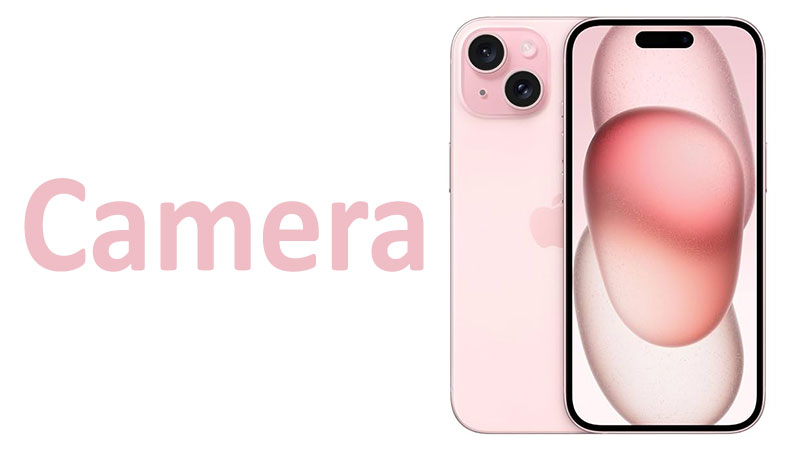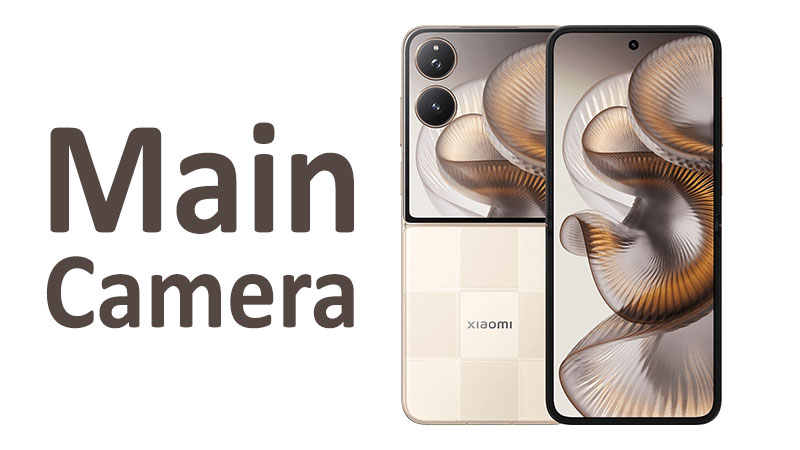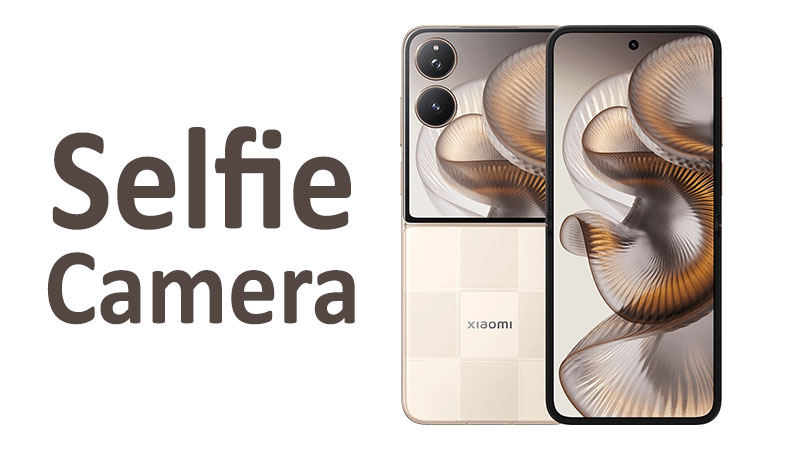The Apple iPhone 15 camera system delivers a massive upgrade in mobile imaging. It introduces a high-resolution sensor to the standard model. This move signifies a major shift in Apple’s core photography strategy. This detailed review explores every aspect of the iPhone 15’s imaging capabilities. We analyze the technical specifications and real-world performance. This article helps you understand if this camera is the right fit for your daily needs. We cover still photography, advanced video features, and crucial buyer insights. The iPhone 15 promises professional-quality results for every user.
Technical Specifications Deep Dive
The iPhone 15 features a sophisticated dual-camera setup on the back. This pairing combines a high-resolution main sensor with a trusted ultrawide lens. Apple’s focus remains on performance and seamless integration. Understanding these specifications is key to evaluating the phone’s power.
The New 48 MP Wide Sensor
The primary camera is the most significant improvement. It now features a 48 MP resolution sensor. This change moves the standard iPhone into high-resolution territory. The lens uses a fast f/1.6 aperture. This is a very wide opening. It allows substantial light to reach the sensor. The focal length is equivalent to 26mm. This is a classic and versatile “wide” perspective.
The sensor itself is physically large, measuring 1/1.56 inches. Larger sensors generally capture better light and dynamic range. Each pixel on the sensor is 1.0µm in size. This is a good physical size. However, the camera often uses pixel-binning technology. This merges four pixels into one large “quad-pixel.” This results in a superior 12 MP final image. This method dramatically improves low-light performance and reduces noise.
Furthermore, the main sensor includes dual pixel Phase Detection Autofocus (PDAF). This system locks focus with exceptional speed and accuracy. It uses every pixel for both focusing and image capture. Sensor-shift Optical Image Stabilization (OIS) is also a core feature. This technology physically moves the sensor itself. It counteracts camera shake effectively. This stabilization system helps deliver sharp, crisp images even in challenging conditions. The 48 MP sensor elevates the standard iPhone photography experience.
The Dependable 12 MP Ultrawide Lens
The secondary camera is a 12 MP ultrawide sensor. This lens offers a 13mm equivalent focal length. It captures an impressive 120˚ field of view. This wide perspective is perfect for landscapes and group photos. The aperture is f/2.4. This is slightly slower than the main lens. However, it performs reliably in bright light. The ultrawide pixels measure 0.7µm.
This ultrawide lens does not feature PDAF in the standard model. It is a fixed-focus lens. Therefore, it is optimized for subjects far away. The lens works perfectly for capturing large scenes. It offers great geometric accuracy. Apple’s software corrects lens distortion efficiently. This keeps straight lines from appearing curved at the edges. The iPhone 15 camera system gains essential versatility from this ultrawide module.
High-Quality 12 MP Selfie Camera
The front-facing camera receives key enhancements. It features a 12 MP sensor. The lens has an f/1.9 aperture. This is fast for a front camera. The focal length is 23mm, which is great for single or group selfies. The individual pixel size is 1.0µm.
The selfie camera includes Phase Detection Autofocus (PDAF). This ensures quick, accurate focus for self-portraits and video. It keeps the subject sharp even with movement. The iPhone 15 specs also list an SL 3D sensor. This sensor captures depth and biometric data. It is crucial for Face ID. It also assists in creating realistic depth effects for portrait selfies.
Still Photography Performance Analysis
The specifications translate into excellent real-world photography performance. Apple continues to emphasize color accuracy and consistency. The iPhone 15 excels across diverse shooting scenarios.
Daylight and Detail Capture
In bright daylight, the iPhone 15 captures stunning images. The 48 MP sensor defaults to 12 MP binned images. These photos show exceptional sharpness and low noise. Colors are rich but remain true-to-life. Apple avoids the overly saturated look of some competitors. This results in a natural, pleasing aesthetic.
If users need maximum detail, a high-resolution mode is available. This mode uses the full 48 MP resolution. It is best used in very bright conditions. It is ideal for photos intended for large prints. This extra detail allows for heavy cropping in post-processing. The wide f/1.6 aperture maintains shallow depth of field. This naturally separates the subject from the background.
Low-Light and Night Mode Performance
Low-light photography sees major improvements on the iPhone 15. The combination of the large 1/1.56-inch sensor and the fast f/1.6 lens is powerful. Pixel-binning technology is critical here. It turns four smaller pixels into one large, light-sensitive pixel. This dramatically increases light capture.
Night Mode engages automatically when light levels drop. It takes a short series of exposures. The phone then merges them for a single, bright, and clean image. Noise reduction is subtle yet effective. The result is photos that retain shadow detail. They also avoid over-brightening the scene unnaturally. Sensor-shift OIS is vital in Night Mode. It stabilizes the image during the multi-second exposure period. This prevents motion blur from hand shake. The iPhone 15 low light performance is top-tier for its class.
Ultrawide Versatility and Consistency
The 12 MP ultrawide lens provides a great alternative perspective. It is perfect for fitting sprawling vistas or tight interiors into the frame. Apple’s color profile ensures consistency. Photos from the main lens and the ultrawide lens look similar. This makes editing and sharing photo sets easier.
Geometric correction is excellent. This is a key feature for architectural photography. Barrel distortion, the common bulge at the edges, is minimal. The fixed focus works well for wide scenes. This helps keep the operation simple and reliable. The iPhone 15 camera ultrawide performs best in bright daylight. It still produces usable images in moderate indoor lighting.
Computational Photography and HDR
Apple’s strength lies in computational photography. The iPhone 15 leverages this power constantly. Smart HDR processes multiple exposures instantly. This produces images with wide dynamic range. Highlights are controlled, and shadows are lifted. This ensures balanced photos even in difficult lighting.
The Photo Styles feature allows users to customize their look. They can set a preferred tone and warmth. The camera applies this setting intelligently to every photo. The camera also supports shooting in Apple’s ProRAW format. This gives advanced users maximum flexibility for editing. They can manipulate colors and exposure with professional-grade control.
Portrait Mode and Bokeh Effect
Portrait Mode on the iPhone 15 is highly refined. It uses the depth information from the main sensor. The phone creates a beautiful, artificial background blur. This bokeh effect helps the subject stand out. Edge detection is highly accurate. It cleanly separates hair and clothing from the background.
A significant new feature is post-capture depth control. Users can adjust the level of blur after taking the photo. They can even change the focus point. The 12 MP front camera also produces excellent portrait selfies. It uses the SL 3D sensor for precise depth mapping. This results in very natural and professional-looking self-portraits.
Advanced Videography Capabilities
Video recording is a cornerstone of the iPhone experience. The iPhone 15 provides some of the best video capabilities on any smartphone. It offers high resolution, high frame rates, and professional features.
4K and High-Frame-Rate Options
The iPhone 15 records stunning video at 4K resolution. This is available at 24, 25, 30, and 60 frames per second (fps). The 24fps option provides a classic cinematic look. The 60fps mode is perfect for capturing fast action with smooth playback. The footage is consistently sharp and well-exposed.
Slow-motion options are also extensive. The phone supports 1080p resolution at 120fps and 240fps. The 240fps mode allows for incredible slow-down effects. This is ideal for sports or dramatic moments. This iPhone 15 video capability is highly versatile for various creative projects.
Dolby Vision HDR Recording
A major standout feature is Dolby Vision HDR recording. The iPhone 15 captures video with up to 60fps in Dolby Vision. This format offers a vast color palette and superior contrast. The dynamic range in Dolby Vision footage is phenomenal. You see more detail in the brightest and darkest parts of the scene. This makes recorded content look vibrant on compatible screens.
The system records stereo sound with the video. This adds depth and realism to the footage. Dolby Vision is highly sought after by content creators. It gives iPhone 15 users a professional-grade video tool.
Stabilization Mastery
The iPhone 15 uses two main stabilization methods. The main lens benefits from sensor-shift OIS. This provides physical, hardware-based stability. The ultrawide and front cameras use electronic stabilization (EIS). This is often supplemented by gyroscope data (gyro-EIS).
This combination results in exceptionally smooth video. Even walking while filming produces stable footage. This virtually eliminates the need for bulky external gimbals. The Action Mode feature, available in the camera app, pushes stabilization further. It crops the video slightly. It then applies heavy digital stabilization. This allows users to capture smooth footage of high-movement activities like running.
Selfie Video Quality
The 12 MP front camera offers 4K video recording. This is available at 24, 25, 30, and 60fps. This ensures high-quality vlogging and video calls. The selfie video also supports gyro-EIS. This keeps handheld self-recordings smooth and watchable. The front camera is perfect for capturing high-quality content on the move.
Specialized Camera Comparisons and Context
Evaluating the iPhone 15 camera requires comparison. We must look at its predecessor and top rivals. This highlights its position in the competitive smartphone market.
iPhone 15 vs. iPhone 14 (or Predecessor)
The iPhone 15 represents a massive leap over its immediate predecessor. The key difference is the jump from a 12 MP main sensor to the new 48 MP sensor. The iPhone 14 was limited to 12 MP on the main lens. This limited its high-resolution capabilities. The iPhone 15 now provides significantly more detail in its full-resolution mode.
The sensor size also increased from the iPhone 14. This change, combined with the faster f/1.6 aperture, improves light gathering. Consequently, low-light and night mode photos are cleaner. They show less noise and better clarity. The iPhone 15 also gains the crucial 2x optical zoom option. This is achieved by intelligently cropping the 48 MP sensor. The iPhone 14 relied on basic digital zoom. This difference alone makes the iPhone 15 a superior choice for photographers. The video specifications, particularly the Dolby Vision HDR, are also refined on the newer model.
iPhone 15 vs. Key Android Flagships
The iPhone 15 competes with powerful Android rivals. These include devices from Samsung and Google. Samsung often emphasizes hardware like extreme zoom lenses. Google focuses heavily on computational AI. The iPhone 15 maintains a strong position by balancing both.
The iPhone 15’s main sensor is smaller than the 200 MP sensors found in some rivals. However, Apple’s image processing is arguably more refined. iPhone photos typically exhibit superior color accuracy and natural skin tones. The video capabilities remain a key differentiator. Dolby Vision HDR recording is often smoother and more consistent on the iPhone. While competitors offer higher numbers, the iPhone 15 camera provides a balanced and reliable experience. The integration of its camera with the iOS ecosystem is seamless. This provides a distinct user experience advantage.
User Experience, Pros, Cons, and Buyer Insights
A great camera relies on a functional and enjoyable user experience. The iPhone 15 delivers a clean and simple camera app. Buyers should know what the system excels at and where its limits lie.
User Interface and Workflow
The native camera app is known for its speed and simplicity. It launches instantly. Switching between photo and video modes is quick and intuitive. The dual-camera setup simplifies options. The 2x zoom option, achieved through the 48 MP sensor, is easily accessible. This provides quick framing flexibility.
The Pro-level features remain accessible. This includes Photo Styles and ProRAW shooting. However, most users will find the automatic modes sufficient. The processing speed is very fast. There is virtually no shutter lag, even for HDR or Night Mode shots. This responsiveness makes the iPhone 15 excellent for candid and action photography. The camera provides consistent, predictable results every time.
Pros and Cons
Pros of the iPhone 15 Camera:
- Excellent Image Quality: The 48 MP main sensor provides superb detail and resolution.
- Superior Low-Light: Sensor-shift OIS and pixel-binning yield clean night photos.
- Best-in-Class Video: 4K up to 60fps with consistent Dolby Vision HDR recording.
- Seamless Autofocus: Dual pixel PDAF on both main and selfie cameras ensures sharpness.
- Reliable Color Science: Photos feature accurate, natural-looking colors and skin tones.
- Effective Stabilization: Sensor-shift OIS and gyro-EIS provide professional-grade stability.
Cons of the iPhone 15 Camera:
- Limited Optical Zoom: The standard iPhone 15 lacks a dedicated telephoto lens. Users must rely on the 2x digital zoom, which is effective but not true optical zoom.
- Fixed Focus Ultrawide: The ultrawide lens does not have autofocus. This limits its utility for close-up or macro shots.
- ProRAW File Size: Shooting in ProRAW or 48 MP mode creates large files. This quickly fills the phone’s storage capacity.
Important Buyer Considerations
The iPhone 15 is a phenomenal camera for the average user. It excels at point-and-shoot simplicity. It produces consistently great photos and videos in most situations. However, serious photographers should consider the lack of a dedicated telephoto lens. This means subjects far away will lose quality compared to Pro models.
The video quality is a huge selling point. The Dolby Vision HDR is unmatched by many competitors. Creators focused on video content will love this feature. Buyers should be aware of the storage implications. If you plan to shoot a lot of 4K 60fps video or 48 MP photos, consider a higher storage configuration. The iPhone 15 camera offers a perfect balance of performance and ease of use. It is a fantastic upgrade from older generations. The overall experience is reliable and fun.
Conclusion
The Apple iPhone 15 camera represents a significant evolution for the standard iPhone line. The adoption of the 48 MP main sensor is a game-changer. It provides excellent resolution and vastly improved low-light performance. Sensor-shift OIS is a reliable feature. It ensures crispness across all shooting conditions. The 12 MP ultrawide camera, combined with Apple’s refined color processing, creates a highly versatile system.
Video capabilities are perhaps where the iPhone 15 truly shines. The ability to capture 4K at 60fps with Dolby Vision HDR is industry-leading. This makes the phone a powerful tool for casual and serious videographers alike. While the system misses a dedicated optical zoom lens, the 2x digital crop from the main sensor performs remarkably well.
Ultimately, the iPhone 15 offers professional features wrapped in an easy-to-use interface. It is a compelling choice for anyone seeking a high-performing and reliable camera phone. The camera delivers exceptional image quality and stability. This makes it an intelligent purchase for capturing life’s moments.
Frequently Asked Questions
Does the Apple iPhone 15 have a dedicated telephoto lens?
No, the standard iPhone 15 does not include a dedicated telephoto lens. It achieves 2x zoom by intelligently cropping the 48 MP main sensor.
Is the main camera on the iPhone 15 a major upgrade?
Yes, the transition from a 12 MP to a 48 MP main sensor is a substantial upgrade. It improves detail, low-light sensitivity, and zoom versatility.
Can the iPhone 15 record high-quality slow-motion video?
Yes, the iPhone 15 can record super slow-motion video. It supports 1080p resolution at up to 240 frames per second.
What is the maximum video resolution the iPhone 15 supports?
The iPhone 15 supports a maximum video resolution of 4K. This is available at various frame rates, including a smooth 60 frames per second.
Does the iPhone 15 selfie camera have autofocus?
Yes, the 12 MP front-facing camera includes Phase Detection Autofocus (PDAF). This ensures your face is always sharp in selfies and video calls.



